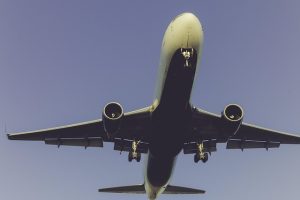
Crosswinds are a concern when piloting an airplane. Very rarely do winds align perfectly with an airplane’s path of travel. Instead, winds typically move in a different direction, which can result in crosswinds. To learn more about crosswinds and how they affect airplanes, keep reading.
An Introduction to Crosswinds
A crosswind is a wind that moves perpendicular to an airplane’s path of travel. In other words, it strikes the airplane from the side.
Whether a wind is a crosswind depends on its direction and the direction of the airplane. If an airplane is traveling north or south, crosswinds may come from the east or west. Conversely, if an airplane is traveling east or west, crosswinds may come from the north or south.
Crosswinds vs Headwinds and Tailwinds
In addition to crosswinds, there are headwinds and tailwinds. Like with crosswinds, they are characterized by their path of travel relative to that of an airplane. A headwind is a wind that moves against an airplane’s direction of travel, whereas a tailwind is a wind that moves in the same direction of an airplane.
If an airplane is traveling south, headwinds may travel north, going against the airplane’s direction of travel. If an airplane is traveling north, tailwinds may travel north as well.
How Crosswinds Affect Airplanes
Crosswinds affect airplanes in several ways. During takeoffs, they can introduce lateral drift. Runways, of course, are typically straight. Pilots must track the centerline to safely to take off. Crosswinds, though, can make takeoffs more challenging by essentially pushing airplanes to the side. Pilots must overcome this lateral drift during takeoffs using rudders.
Landings are also more challenging in the presence of crosswinds — even more so than takeoffs. Landings require pilots to maintain runway alignment during descent. Crosswinds can push airplanes out of alignment via lateral drift, amplifying the difficulty of landings.
When landing in crosswinds, pilots may use one of two methods: the crab method or the sideslip method. The crab method involves pointing the nose of the airplane into the wind during the final approach, and just before touchdown, the pilot applies the rudder to align the airplane with the runway. The sideslip method, on the other hand, involves lowering the airplane’s upwind wing while applying the opposite rudder.
In Conclusion
Crosswinds are a constant factor in aviation They rarely stop flights altogether, but they do demand skill, awareness and precise control inputs. Whether during takeoff, landing or approach, crosswinds test a pilot’s ability to balance the forces acting against the airplane.



